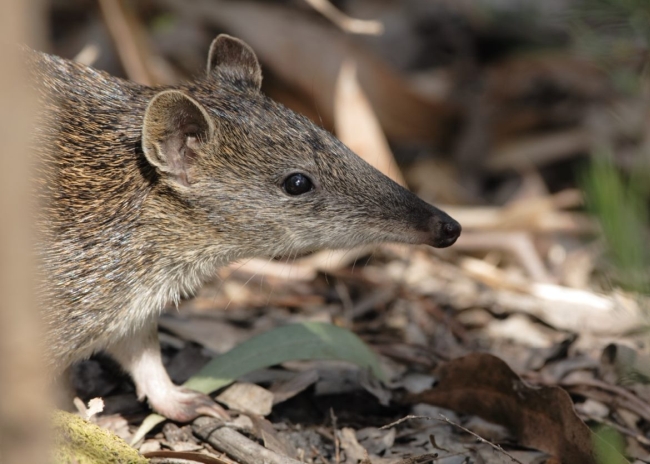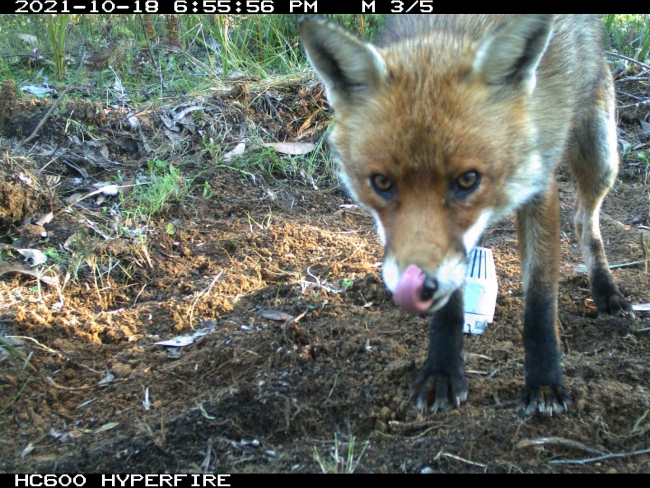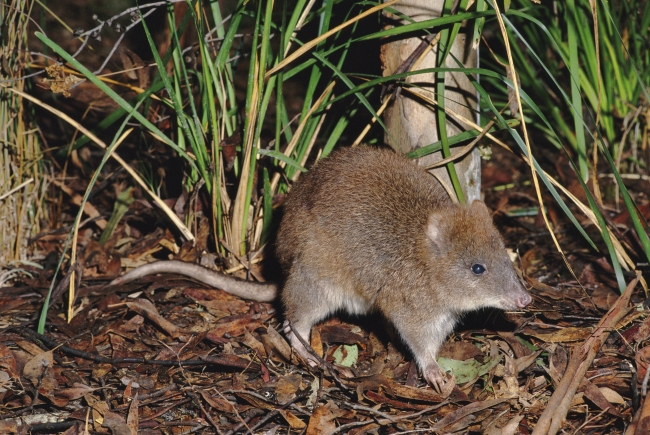Victoria is home to a fascinating array of small to medium-sized mammals. Many native mammals in this size range, like potoroos and bandicoots, have poor conservation status, which is often the result of restricted and fragmented habitat, inappropriate fire regimes and their vulnerability to introduced predators like Foxes and feral Cats.
Potoroo and bandicoot species with a Flora and Fauna Guarantee Act 1988 listing in Victoria are:
- Long-nosed Potoroo Potorous tridactylus trisulcatus Vulnerable

- Long-footed Potoroo Potorous longipes Endangered
- Southern Brown Bandicoot Isoodon obesulus obesulus Endangered
- Eastern barred Bandicoot Perameles gunnii Endangered
To study these cryptic animals and learn more about their ecology, habitat requirements and conservation needs, ARI uses a range of innovative approaches and technologies, such as camera trapping. This is especially important for threatened species where understanding their status and population trends, and those of their introduced predators, can help wildlife managers to assess the success of recovery actions.
Introduced predator control
Across Victoria there are long running, large scale introduced predator control programs including Southern Ark, Glenelg Ark, Grampians Ark, Otways Ark and the Barry Mountains Ark Fox control program. These programs seek to reduce the impact of Foxes on native animals like bandicoots and potoroos. ARI plays an important role in helping monitor these programs through data analysis and modelling.
ARI uses a range of data models to investigate the impacts of fox control. One such model is FoxNet, a computer model developed at the University of Melbourne, that predicts changes in the density of Foxes as a result of various control strategies.
Camera trap monitoring is used to investigate how Fox and small mammal populations respond to Fox control efforts in the field. Key findings include:
- Potoroos and bandicoots are more likely to be present in locations with fewer Foxes.
- Sites with Fox control at Glenelg Ark have increased occupancy of Long-nosed Potoroos and Southern Brown Bandicoots compared to sites without Fox control.
- Sites with long-term fox control and increased time since fire at the Barry Mountains Ark have increased occupancy of Long-footed Potoroos.

- Continuous fox control has been shown to be more effective than ‘pulsed’ control at various sites across Victoria.
- Combining population assessments and modelling allows for better assessment of long-term management effectiveness.
For more information on predator control analysis, see the following reports and fact sheets:
Post Bushfire Monitoring
The 2019–20 bushfires had a major impact on the forests of eastern Victoria. The impact on native animals was expected to be 2-fold: firstly, through animal deaths due to fire, and secondly by the significant loss of vegetation caused by fire, reducing food and shelter, and increasing the risk of predation by Foxes and feral Cats.
For bandicoots and potoroos, the impact on habitat was widespread. For the Long-footed Potoroo, 79% of its modelled habitat in Victoria was within the fire extent, with 51% of this impacted by high severity fire. For the Southern Brown Bandicoot, 25% of its modelled habitat in Victoria was within the fire extent, with 19% impacted by high-severity fire.
Long-term camera trap monitoring undertaken as part of the Southern Ark and Barry Mountains Ark projects, offered a unique opportunity to monitor the immediate and ongoing impacts of the 2019–20 bushfires. Encouragingly, analysis showed that

Long-footed Potoroo, Long-nosed Potoroo and Long-nosed Bandicoot populations remained stable immediately after the 2019/20 bushfires. However, although Southern Ark has reduced Fox densities across a very large area of far East Gippsland, the chance of Long-footed Potoroos occurring at a site was zero when modelled Fox density was higher than 0.5 individuals/Km2.
Analysis of long-term monitoring at the Barry Mountains Ark has shown a strong association between time since fire and occupancy of Long-footed Potoroos. This has potential implications for how the frequency of fire is managed in the landscape.
For more information on post bushfire monitoring, see the following resources:
For more information on ARI’s work protecting small mammals, contact: Alan.Robley@delwp.vic.gov.au
Page last updated: 29/01/25